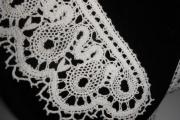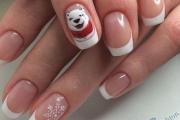Flesh tone what colors mix. How to Get Realistic Skin Tone
Every aspiring portrait painter or artist should definitely learn how to create a realistic shade of human skin. As you gain experience, you will develop your own color mixing technique that is convenient for you.
In general, the ability to correctly select and mix colors is an entire art, because each person has their own individual skin tone. Once you learn how to create realistic skin colors, you can experiment with surreal looks and shades. Let's consider options for how to make skin color.
How to make skin color with gouache?
By mixing different shades you can create a perfectly accurate skin color. But first you need to determine which shade you need, since one or another combination of colors will be used to recreate them.
Create a light skin tone:
- Selection of colors – you will need to try mixing several colors. In order to get a light skin color, prepare the following colors:
- White;
- Blue;
- Yellow;
- Red.
- Mixing colors – it is most convenient to mix paints on a special palette. If you don't have one, any other work surface will do. For example, you can use a piece of thick cardboard. Apply a drop of each color to your palette.
- Mix all the paints in equal quantities - using a brush, mix the same amount of blue, yellow and red paint. By mixing three primary colors, you will get a dark base - this is how it should be, because further you will lighten it.
Important! Before dipping your brush into a different color of paint, be sure to rinse it in a container of water.
- Compare shades - there should be a shade in front of your eyes that you would like to copy. Compare your foundation with the shade you want to achieve. If you are copying from a photo, then take into account its lighting.
- Lightening - if you need to achieve a lighter shade, then add yellow and white paint. Using yellow paint you will get a warmer shade, and using white paint you will get a cooler one.
Important! Add paint a little at a time and mix the colors well before adding more.
- Add red paint. If you already have a fairly light tone, but don't yet have a realistic shade, then you can add a little red paint, but not too much, unless you are trying to achieve a sunburned skin tone.
- Adjust the color - again compare the color you get with the one you want to get. If the shade is too light, you can add a little blue and red. But, if the shade is too different from the desired one, it is better to mix everything again.
Important! You can mix several color options and then choose the one that suits your painting.

Create a medium skin tone:
- Selection of paints in the right shades. To create a medium skin tone, mix more colors. Prepare the following paints:
- Yellow;
- Red;
- White;
- Blue;
- Natural sienna;
- Burnt umber.
- Mixing colors - similar to the previous instructions, apply a drop of paint of each color to the palette.
- Mix yellow and red. By combining equal amounts of yellow and red paint, you get orange.
- Add blue color. Little by little and gradually add blue paint to the base. If you want a darker shade, try adding a little black paint.
- Compare shades. The skin tone you want to copy should be in front of you. Compare the foundation you received with the shade you want.
- Add red paint - add red very little at a time. It is better to add paint little by little and gradually so that you do not have to redo the base.
- To create a darker olive color, mix equal amounts of natural sienna and burnt umber. You should have a dark, concentrated mixture. Add the required amount of this mixture little by little to the base.
Important! This mixture can be used instead of blue. To achieve a darker olive color, add a little yellow mixed with green.
- Mix until you get the desired tone - combine colors until you have at least five shades that you are happy with. From them you can choose one option that suits you.
Important! It is better to use one or two shades.
Creating dark skin tones:
- Selecting paints in the right colors - to achieve a truly realistic shade, you will have to experiment a little. Prepare the following paints:
- Natural sienna;
- Burnt Umber;
- Red;
- Yellow;
- Purple.
- Mixing colors follows the same principle as before.
- Let's make the base. Mix equal amounts of natural sienna and burnt umber. Also mix equal amounts of yellow and red paint. Then add the yellow-red mixture little by little to the first mixture.
- Comparing shades - compare the base you received with the shade you need to achieve.
- Create a dark skin tone. To make the skin color richer and darker, you can add a little purple. Dark purple is suitable here, which can be obtained by mixing dark gray or black with purple. You need to mix until you get the perfect version.
Important! Black paint can ruin the base, so you should add it very little and gradually. Try mixing until you achieve the perfect result.
- Create a lighter shade. To lighten a very dark color a little, use burnt umber instead of purple. Take a small amount of the mixture and see what color you come up with.
- Lighten the shade. This can be achieved by adding orange to the base. Orange will lighten the base well, giving it a natural look, while white can dilute it too much.
- If you have achieved the desired result, start drawing.
Important! To add shadows and light and shade, use gray. When drawing skin, it is advisable to use several shades at once.
How to get skin color from plasticine?
In clay animation, live characters are often animated, so to create their hands, faces and other body parts, they need a color that is similar to the color of human skin. Making leather color from plasticine is actually not that difficult, you just need to show a little patience.
If you couldn’t find plasticine of the color you already need in the store, you can get it by mixing other colors. To get the skin color we need the following colors:
- White – the whole piece;
- Dark pink – 3-4% of the whole piece;
- Other colors – 5% each.
When you knead these colors into a homogeneous mass, you will approximately be able to see what color you get.
Drawing is a hobby that I have loved since childhood. You can draw landscapes, still lifes, portraits, etc. But the hardest thing is to draw people. And the main problem when drawing a person is how to get flesh color. Let's talk about it.
flesh color
Flesh is a color that has the hue of human skin. This usually refers to the skin of representatives of the white race. Flesh is considered one of the most difficult to reproduce in painting.
Getting flesh color
If you don't know how to make a flesh color, then mix ocher with white, yellow and red. Moreover, there should be the most ocher, very little red, and the tone depends on the amount of white. You can also mix white and pink, adding yellow or beige to them. You can use white to dilute brown paint until the desired shade is obtained, or add white to a mixture of yellow and purple colors, the amount of which will determine how much lighter the color will be. In any case, body paint can only be obtained experimentally.
Shades of flesh color on different parts of the body
Skin color varies greatly on different parts of the body and among different people. Men's skin is usually depicted as darker than women's. The main color is in the chest area, and below the tones are darker and ruddy. The skin on the arms, legs, elbows and knees is darker and redder than in the very center of the chest. Fleshy areas of the body have warmer tones than bony areas. Dark skin contains more blue than light skin. And in the sun it has more red shades than blue. Ruddy skin has many purple tones. Medium-tone skin contains a lot of gold. The face is usually divided into 3 zones: from the chin to the nose - cool tones, from the nose to the eyebrows - red tones, from the eyebrows to the hair - golden tones.
Now that you know how to get flesh color, you can safely paint pictures with people present.
Selecting the right shade in watercolor often seems quite difficult, but it is not, and just like in other types of painting (for example, oil), it is created by mixing different colors. This also applies to how to get skin color from watercolor. In this article we will try to sort this out.
To begin with, let's mention an important feature of watercolor. Unlike oil, where white is used to lighten the color, in watercolor, paper is used for this purpose, which is visible through the paint layer, as well as water, which dilutes the paint. Therefore, in order to make flesh color with watercolors, it is not at all necessary to use white paint.
How to get skin color with watercolors
First, let's prepare watercolors, water and brushes. As a palette, you can use a paint lid, cardboard, or watercolor paper itself - any surface that will not immediately absorb paint.
Next, we apply red color to our palette, and then ocher (or, if it is not there, mix yellow and brown). They can be mixed in equal quantities or with a predominance of ocher, depending on the skin tone.
To make the color less saturated, dilute it a little with water (but do not make it completely pale, given that watercolor often loses its brightness when drying). We apply the resulting shade to areas of the skin - this way we will create a “tint” that will shine through the upper layers and set the overall tone.
It’s okay if at this stage you can’t exactly hit the desired shade; it’s much more important now to set the desired tone. The tone can be warm or cold; in a living person it is usually warm, even if the skin is very pale. Therefore, in order to accurately convey skin color in watercolor, it is not advisable to add cold colors at the first stage. To show the lightness of the skin, just dilute the paint with water.
Further work process (layers)
When applying further layers, you can use other colors: brown, blue, green, earthen and their various variations. Cool colors are often mixed with warm colors (brown, ocher, yellow) to create shadows, sometimes they can even be used alone to contrast with warm fragments. In order to paint skin more accurately, you should carefully look at the person’s face, photograph or drawing from which you are writing.
Skin tone chart
To make it easier for you to choose the right shade, we have compiled an approximate table of color relationships. Of course, there are many more shades, but using the example table you can get a general idea of the patterns of color mixing. In addition to the flesh color characteristic of Europeans, the table also includes others that are suitable for writing the skin of representatives of Asian, African and other races.
 |
20% brown/ochre (can be orange) diluted with 80% water |
 |
20% red 80% water |
 |
20% - brown, blue and yellow colors mixed in equal proportions 80% - water |
 |
80% - brown and yellow mixed in proportions 1 to 1 20% - blue |
 |
100% - brown and yellow (1:1) |
 |
60% - brown and yellow 40% - blue |
 |
60% red 40% brown |
 |
50% brown 30% blue 20% yellow |
 |
80% - brown and red (1:1) 20% - blue |
 |
40% brown, you can add a little ocher or yellow 60% blue |
 |
20-30% brown 70-80% blue |
 |
100% - red and blue (1:1), you can add a little brown or ocher |
 |
30% red 70% blue |
| 100% - blue and brown (1:1) |
As we can see, to obtain a warmer shade, colors such as red, brown, yellow, ocher should predominate; for a cool shade, blue is most often used.
We hope this article has given you a good enough idea of how to create skin color in watercolor. Good luck with your creativity!
Every aspiring artist or portrait photographer should learn how to create realistic skin tones. As you gain experience, you will be able to develop your own color mixing technique that is convenient for you. In general, the ability to correctly select and mix colors is a real art, since each person has their own unique skin tone. Once you learn how to create realistic skin tones, you can experiment with surreal shades and looks.
Steps
Create a lighter skin tone
- You don't want to add too much red paint unless you're going for a shade that will match sunburned skin.
-
Adjust the shade. Again compare the shade you get with the one you want to achieve. Try to correct it further. If the shade is very different from the desired one, it is better to mix the paints again. If it turns out too light, add a little red and blue.
- You can create several shade options and then choose the most suitable one for your painting.
-
Add blue color. Gradually and little by little add blue paint to the base. If you want to achieve a darker shade, you can try adding a little black paint.
Compare shades. You should have the skin tone you want to copy in front of your eyes. Compare the resulting base with the shade you are trying to achieve. If you are copying from a photograph, consider the lighting.
Add red. If you need to add red, add it a little at a time. It’s better to add paint gradually so that you don’t have to redo the base later.
Create a darker olive shade. Mix equal amounts of burnt umber and natural sienna. You will end up with a dark, concentrated mixture. Gradually add the required amount of this mixture to the base. This mixture can be used instead of blue. To create a more olive shade, add a little yellow mixed with green.
Try mixing until you get the perfect one. Mix colors until you have at least five shades that you are happy with. From them you can choose the ideal option.
Now you can start drawing. Use one or more options for the painting that most closely resemble a realistic skin tone.
You will need to try mixing several colors. To get light skin, prepare the following colors:
Mix these colors. The most convenient way to mix paints is on a special palette. If you don't have one, any other work surface will do. For example, you can use a piece of thick cardboard. Apply a drop of each color of paint to your palette.
Mix paints in equal quantities. Using a brush, mix equal amounts of red, yellow and blue paint. Be sure to rinse your brush in a bowl of water before dipping it into a different color of paint. By mixing three primary colors you will create a base.
Compare shades. You should have the skin tone you want to copy in front of your eyes. Compare the resulting base with the shade you are trying to achieve. If you are copying from a photograph, then consider its lighting.
Lighten the shade. If you want to achieve a lighter shade, add yellow and white paint. Yellow paint will give you a warmer shade, while white paint will give you a lighter shade. Add paint a little at a time and mix the colors thoroughly before adding more.
Add red. If you already have a fairly light tone, but have not achieved a realistic shade, you can add a little red. Consider how red changes your skin tone. Sometimes there needs to be more red in your skin tone.
Creating dark skin tones
- burnt umber;
- natural sienna;
- yellow;
- red;
- purple.
-
Mix colors. The most convenient way to mix paints is on a special palette. If there is no palette, then any other work surface will do. For example, you can use a piece of thick cardboard. Apply a drop of each color of paint to your palette.
Choose paints in the colors you need. You will have to experiment a bit to achieve the most realistic shade. Prepare paints of the following colors:
Selecting the right shade in watercolor often seems quite difficult, but it is not, and just like in other types of painting (for example, oil), it is created by mixing different colors. This also applies to how to get skin color from watercolor. In this article we will try to sort this out.
To begin with, let's mention an important feature of watercolor. Unlike oil, where white is used to lighten the color, in watercolor, paper is used for this purpose, which is visible through the paint layer, as well as water, which dilutes the paint. Therefore, in order to make flesh color with watercolors, it is not at all necessary to use white paint.
How to get skin color with watercolors
First, let's prepare watercolors, water and brushes. As a palette, you can use a paint lid, cardboard, or watercolor paper itself - any surface that will not immediately absorb paint.
Next, we apply red color to our palette, and then ocher (or, if it is not there, mix yellow and brown). They can be mixed in equal quantities or with a predominance of ocher, depending on the skin tone.
To make the color less saturated, dilute it a little with water (but do not make it completely pale, given that watercolor often loses its brightness when drying). We apply the resulting shade to areas of the skin - this way we will create a “tint” that will shine through the upper layers and set the overall tone.
It’s okay if at this stage you can’t exactly hit the desired shade; it’s much more important now to set the desired tone. The tone can be warm or cold; in a living person it is usually warm, even if the skin is very pale. Therefore, in order to accurately convey skin color in watercolor, it is not advisable to add cold colors at the first stage. To show the lightness of the skin, just dilute the paint with water.
Further work process (layers)
When applying further layers, you can use other colors: brown, blue, green, earthen and their various variations. Cool colors are often mixed with warm colors (brown, ocher, yellow) to create shadows, sometimes they can even be used alone to contrast with warm fragments. In order to paint skin more accurately, you should carefully look at the person’s face, photograph or drawing from which you are writing.
Skin tone chart
To make it easier for you to choose the right shade, we have compiled an approximate table of color relationships. Of course, there are many more shades, but using the example table you can get a general idea of the patterns of color mixing. In addition to the flesh color characteristic of Europeans, the table also includes others that are suitable for writing the skin of representatives of Asian, African and other races.
How to make skin color with watercolors
We will teach you how to properly mix watercolors to obtain flesh color when painting the skin of your hands and face. Considering all skin tones of people of different races
Good afternoon, friends and guests of my store! I want to tell you about the interesting experience of Alisa Luchinskaya, which may be useful to you. How when mixing acrylic paints from seven colors you can get 40 shades.
Russian paints were taken as a basis "Ladoga" of the Nevskaya Palitra plant.
Here are the 7 primary colors with their numbers, as they are written on the tubes: medium yellow (220), red (331), blue “FC” (500), light pink (2204335), burnt umber (2204408), black (810), titanium white (2204101 ).
1. Light colors
Light colors are obtained by mixing primary colors with titanium white.
2. Dark colors
Add a little black paint to the main colors:
3. Shades of green
They are obtained by mixing yellow medium paint with black or blue “FC”. Asterisks “*” indicate colors that are obtained as a result of mixing - and can be used further to obtain new shades.
4. Violet and purple shades
These shades are obtained when we mix red or light pink paint with blue “FC”. Adding white will give lavender or purple shades.
5. Orange shades
Here we mix red and pink light paint with yellow medium. The two lower colors are already more complex formulas, so it’s probably easier to stock up on ocher paint in advance
6. Earthy tones
All of these colors feature burnt umber. Adding white makes dark earth tones appear pastel.
Since paints are mixed “by eye”, it is quite difficult to specify the proportions to obtain one color or another. All the same, in the process of painting you will have to mix the shades, listening to your own feelings: “Is this color needed now or a little darker/lighter/greener/redder”, etc. Therefore, if you are not yet strong at mixing colors, the author recommends investing one evening in training on mixing shades, according to the above formulas, as well as in your own experiments to obtain new colors. After this, you will definitely never confuse the marsh color with emerald (as often happens), since you will remember the process of obtaining them from your own experience.
And to make it easier for you: print out this blank for yourself on A4 sheet:
On it you will sign with a pencil all the colors used and the resulting shades.
Mixing acrylic paints (40 shades out of 7), adaptation
Good afternoon, friends and guests of my store! I want to tell you about the interesting experience of Alisa Luchinskaya, which may be useful to you. How when mixing acrylic paints from seven colors you can get 40 shades.
An artist will be able to draw a natural portrait of a person only when, from the general rules, he derives his unique recipe for achieving a natural complexion on canvas. The article addresses the question of how to obtain flesh color from paints and in what proportions to mix them.
General rules for obtaining flesh color
In order to understand how to make a flesh color and paint a portrait in oil, you should look for white in the bins, which is then gradually diluted with other paints.
Science classifies a person’s color type into 4 types according to the seasons (depending on the color of the skin, eyes and hair).
On paper, healthy skin is a soft, warm beige. Even people with the fairest skin cannot claim that their face is white: just compare it with a blank sheet of paper - the difference will become obvious.
In addition to white, the palette will include ocher, yellow and red cadmium, possibly sienna and umber (only for the purpose of shading, apply extremely carefully). You will need to put a small amount of white on the palette, dilute it with a solvent, then add ocher with red and yellow. In the latter components, the proportion of ocher in relation to other dyes is higher.
Aspects to consider
There is no ideal recipe for a particular shade - the result directly depends on the artist’s vision and the sitter’s complexion.
Primary aspects to consider:
- women's skin is paler and silkier than men's,
- the body, arms and legs are darker than the complexion,
- The reflection of a spot of color located near the object is depicted on the canvas (for example, the reflection of a hat falls on the face).
Color combinations
Flesh color when painting with watercolors
With watercolors things are simpler, but sometimes it may seem that the material is more difficult to work with than oil. An alternative to white when working with watercolors is a paper background that will show through the strokes.
The order of color composition:
- Take a plastic palette and put a few drops of water on it.
- Use the tip of a soft squirrel brush to smear red watercolor.
- Mixing a small amount of red with water results in a faint pink tint.
- After receiving the mixture, add a little yellow.
The consistency is ready to start painting the portrait.
One of the recipes for mixing flesh color
The following combination of colors is present in the theoretical works of contemporary artists.
- Mix 6 parts yellow paint with 1 part red paint, stir until smooth yellow-orange consistency.
- Add ½ part blue. After manipulation, a red-brown tint will appear.
- Add white dye to the resulting mixture. The proportion is not universal - the amount is directly proportional to the desired color: dark or light.
Examples of ideal complexion portraits in painting
Many Russian artists have found a unique balance for depicting the face in a natural manner. Their names are known in the world of painting: Bryullov, Levitsky and Rokotov, as well as many of their colleagues. In reproductions of their works, the master’s hand in depicting the most complex skin tones is clearly visible.
For example, the handiwork of V.L. Borovikovsky “Portrait of Maria Lopukhina”. The artist managed to depict the girl’s youth on paper, with her radiant, fresh skin. Experimental artists of our day will be able to repeat the result only by choosing a flower combination with their own hands.
Getting flesh color by mixing paints
To obtain a flesh color, it is necessary to observe the optimal proportions of other paints. You will need to apply white, dilute with a solvent, and add ocher.

There are several ways to create flesh tones by mixing watercolors. Unfortunately, when I first started drawing portraits, I was not aware of these possibilities. I thought I knew exactly how to achieve a flesh tone using just Jaune Brilliant No. 1 and No. 2, but I was always unhappy with the results. The Burnt Umber I used to create dark and deep shades and mixed with white paint made the final look dull and lifeless. I reached a dead end and didn't know why.
It took a long time to realize my mistake and understand that white will never be the decisive color when mixing flesh tones. In fact, over time, I've learned several ways to bring portraits to life—none of which involve the Jaune Brilliant, Burnt Umber, or white paint that I've come to value so much over the years.
If you want to achieve a Caucasian skin tone:
- Cadmium Red
- Yellow Ocher
- Cerulean Blue
The flesh tones are much more complex than the pink tones I thought I could get out of the Jaune Brilliant paint. In fact, the creation of skin tones is based on a combination of red and yellow pigments. Mixing Cadmium Red and Permanent Rose together creates a gorgeous flesh tone that can be used for highlights, while shadows deepen when added with Yellow Ocher. If you find the resulting shades are too warm for your taste, you can always add a drop of Cerulean Blue to make it a little cooler.
As an alternative.
- Cadmium Red Light
- Cadmium Yellow Medium
- Dioxazine Mauve
Mixing Cadmium Red Light and Cadmium Yellow Medium also helps create an elegant base shade. To create shades, add Dioxazine Mauve.
If you need to depict dark skin tones:
The last palette used mostly colors in the orange/violet spectrum and it produced some really great results, I think the first palette which mixed Cadmium Red and Permanent Rose is much more versatile . Moreover, it is precisely this that can be easily turned into dark shades.
- Cadmium Red
- Permanent Rose
- Burnt Sienna
- Raw Umber
Instead of Yellow Ocher or Blue Cerulean, use Burnt Sienna to create darker skin tones. If a dark pigment is desired, add Raw Umber until you are happy with the final result.
Adviсe:
- There is no place for white when it comes to drawing a portrait! If you think the color is too dark, you may be tempted to add a little white to lighten the tone. It is the addition of white that results in uneven color and makes the portrait look flat. It is much better to add a little water until the desired shade is on the paper. If you have already applied paint to your brush and suddenly feel that the tone is too dark, take water, a brush and a cloth towel to gently remove the paint from the sheet.
- Use a piece of testing paper to avoid unwanted color. Cadmium Pink mixed with Permanent Pink looks quite dark on the palette, but on paper it looks like a completely natural tone. It is not difficult to forget that watercolor paints become lighter as they dry. It is for this reason that it is very useful to have a sheet of test paper on hand. Make sure the test paper is exactly the same quality as the one you are painting on, as the quality of the paper plays a major role in the final color.
- Work on your painting in layers. Skin is made up of many colors, rather than one color for the shadows, another for creating the undertones, and another for the highlights. The power of watercolor lies in its ability to create almost transparent layers, giving the opportunity to create layers of deeper shade. Gradually layering the colors will also save you from ruining the entire design, which you spent about two hours on to apply a thick layer to the paper, which you may later regret.
- Don't forget to add white when drawing the eyes. When you start painting the first translucent base coat of the portrait, don't be afraid to apply white in the eye area. There is no such thing as a pure white eye - in fact, it only appears that way in photographs. The contrast between the eyes and skin can be increased when undertones and details are added later.
- Be aware of your surroundings. If you draw an image of someone near a red wall, then there is a chance that the skin will be redder than that wall. Why? The light illuminating the depicted object is likely reflected from the red wall, absorbing the color. Try it yourself, find a sheet of colored paper or a piece of plastic and stand in front of a mirror in direct sunlight. The closer a colored object is, the more of its pigment is reflected on your skin.
How to Achieve Skin Tones Using Watercolors
It took a long time to realize my mistake and understand that white will never be the decisive color when mixing flesh tones. In fact, over time, I've learned several ways to bring portraits to life—none of which involve the Jaune Brilliant, Burnt Umber, or white paint that I've come to value so much over the years. If you want to achieve a Caucasian skin tone.














